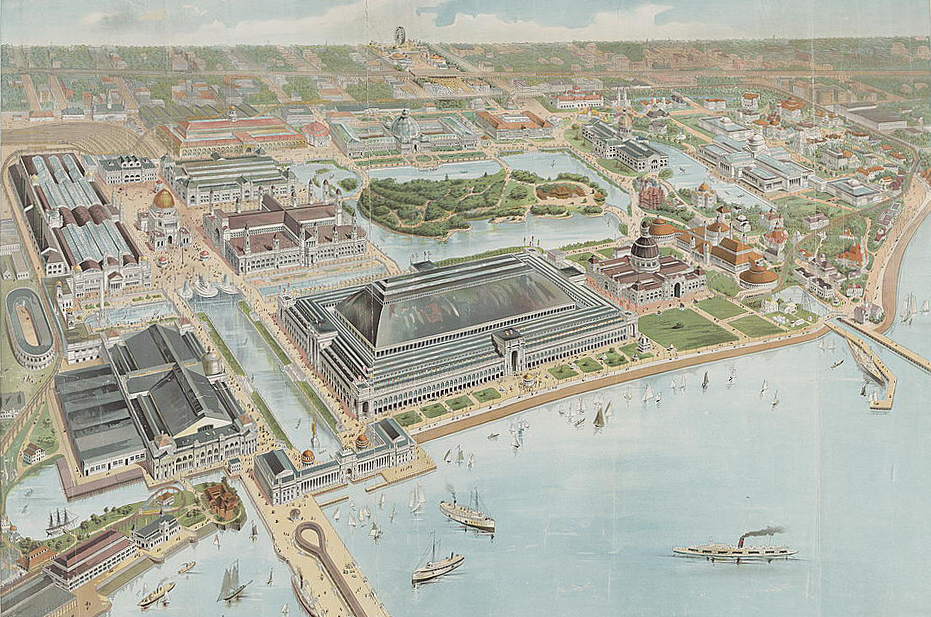World’s Columbian Exposition of 1893 was a historic world’s fair held in Chicago , Illinois, in the upper midwestern United States. The fair celebrated the 400th anniversary of Christopher Columbus’s first voyage to the New World in 1492. The exposition covered about 630 acres (255 hectares) in Jackson Park on the South Side of Chicago and consisted of more than 200 buildings. The fair attracted over 27 million people who could visit thousands of different exhibits of manufacturing ingenuity and artistic imagination. They could also sample foods and cultural entertainment from around the world and enjoy the many decorative pools and fountains.

The exposition, also known as the Chicago World’s Fair, officially opened on May 1, 1893, and closed six months later, on Oct. 30, 1893. The famous architect and city planner Daniel Burnham was appointed the exposition’s director of works. He assembled a brilliant group of architects to create the fair, notably Dankmar Adler, Richard Morris Hunt, William Le Baron Jenney, Louis Sullivan, and the firm of McKim, Mead, and White, and sculptors Daniel Chester French and Augustus Saint-Gaudens. The noted landscape architect Frederick Law Olmsted was in charge of laying out the grounds.
The heart of the exposition was the White City, a group of neoclassical buildings inspired by the architecture of ancient Rome. The buildings got their name from their plaster of Paris exterior painted a chalky white, a striking sight at night when illuminated by newly perfected electric street lights. The popularity of the White City and its monumental classicism had a strong influence on American architecture well into the 1900’s.
The exposition was the first to have national pavilions. Forty-six countries plus 43 states and territories were represented. The American pavilions advertised the country’s history, food, and culture. The most popular attraction was the first Ferris wheel. It stood more than 250 feet (76 meters) high and could accommodate 2,160 people at a time. Norway sailed a full-sized replica of a Viking ship across the Atlantic Ocean to be shown at the fair. A German manufacturer installed a huge display of modern artillery weapons.

The Ferris wheel was located on the Midway Plaisance. This mile-long strip of land also included carnival rides, sideshows, and replicas of foreign locations, such as a street in Cairo, Egypt. Ragtime pianist Scott Joplin and escape artist Harry Houdini were among the many entertainers who performed on the Midway.
A number of commercial products were introduced at the fair, including Cream of Wheat breakfast cereal, Juicy Fruit gum, the automatic dishwasher, and fluorescent light bulbs. The United States government issued the country’s first commemorative stamps along with the first commemorative coin, the half dollar, on the occasion of the fair.
